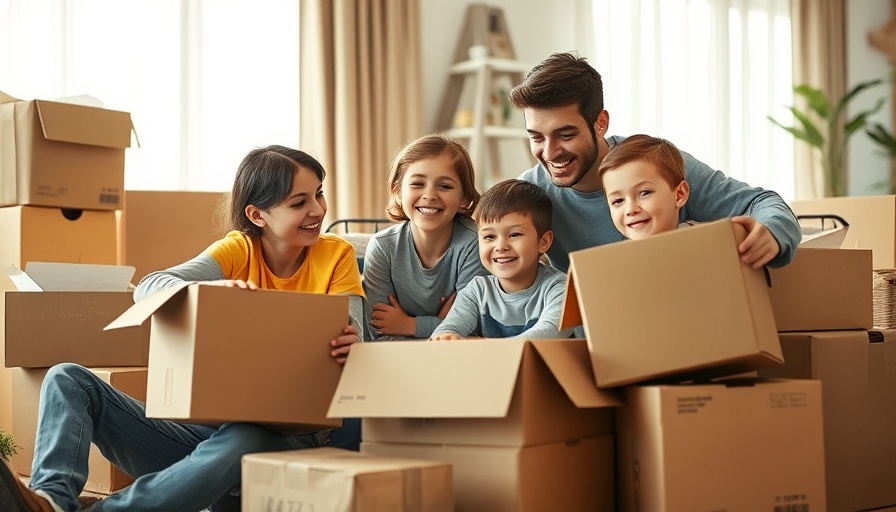
Understanding the Eco-Slump of Convenience Living
Moving to a new home is an exhilarating experience, but it can also lead to what many are calling the "eco-slump of convenience living." After relocation, the temptation to rely on disposable items, take-out food, and energy-intensive solutions increases significantly. Though it may appear as a time-saving choice, this convenience comes with potential pitfalls for both our environment and our commitment to sustainable living.
Unpacking the Consequences of Convenience
Adopting a convenience-driven lifestyle after a move often results in several environmental challenges. The most glaring problems include:
- Increased Waste: Single-use plastics and excess packaging tend to accumulate quickly during this transient phase.
- Higher Energy Consumption: Over-reliance on power-hungry devices can contribute to soaring utility bills.
- Food Waste: Ordering take-out meals frequently leads to larger portions, resulting in unnecessary waste.
- Increased Carbon Footprint: Deliveries and packaged goods increase vehicle emissions significantly.
While the initial comfort of convenience may seem harmless, these negative outcomes can dramatically impact long-term sustainability goals.
Establishing Sustainable Habits from the Start
The best time to lay the groundwork for sustainable living is right at the beginning of your move. Instead of relying on conventional packing methods—like cardboard boxes and plastic wraps—consider employing reusable containers, cloth bags, or even old newspapers.
Once you settle into your new home, think about how to refresh your space sustainably. Opt for eco-friendly cleaning products rather than chemical-laden alternatives. Not only do these small choices help avoid the eco-slump, but they also promote a more conscious lifestyle.
Setting Up for Energy Efficiency
The setup phase of your new home offers a golden opportunity to establish an energy-saving system that reduces environmental impact and lowers bills. Replace traditional light bulbs with energy-efficient LEDs and invest in programmable thermostats to manage heating and cooling more effectively. Additionally, check your home’s insulation to ensure you're not wasting energy.
Install low-flow faucets and showerheads to conserve both water and energy. These adjustments, though small, can collectively make a significant difference in your household’s ecological footprint, fostering a more eco-friendly living space.
Choosing Sustainable Foods
Your grocery shopping habits can also reflect your commitment to sustainability while settling in. Prioritize eco-friendly grocers and opt for bulk purchases to reduce packaging waste. Engage in meal planning to use fresh ingredients efficiently and lessen your reliance on take-out options.
Consider growing your herbs and vegetables if you have outdoor space—a starting point that can yield both fresh produce and a connection to nature that's often lost in convenient living.
A Mindful Approach in the Context of Climate Change
It's important to contextualize our journey toward sustainable living within the global waste crisis and the effects of climate change. Each individual’s choices contribute to a larger narrative, one where every action counts. By preventing the eco-slump through conscious decision-making, you are playing a role in reducing overall waste and promoting a healthier planet.
Conclusion: Small Steps Lead to Big Changes
Transitioning to sustainable living can feel daunting at times, especially after moving into a new environment laden with unpacking and settling in. However, by taking small, mindful actions—whether that’s using reusable containers, prioritizing energy efficiency, or choosing eco-friendly groceries—you can cultivate a more sustainable lifestyle. Let's commit to not letting convenience take precedence over sustainability. Every effort counts.
If you’re eager to finalize your journey into eco-conscious living, start implementing these strategies today and watch as your small changes culminate in a more sustainable future.
 Add Row
Add Row  Add
Add 




 Add Row
Add Row  Add
Add 

Write A Comment